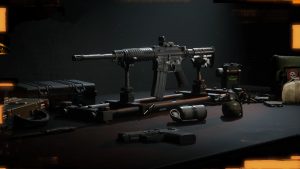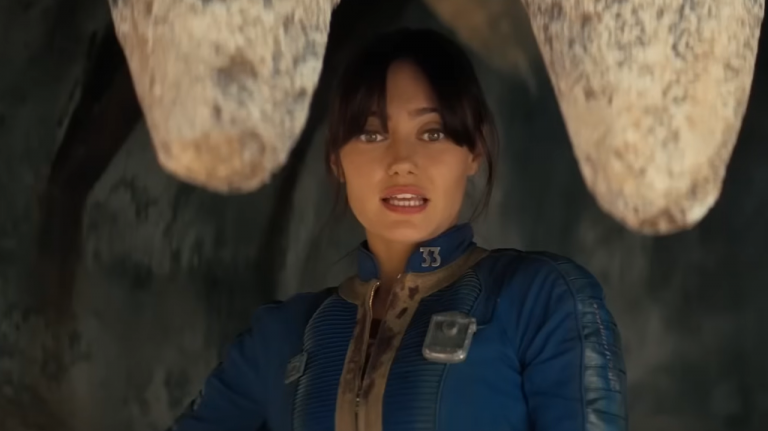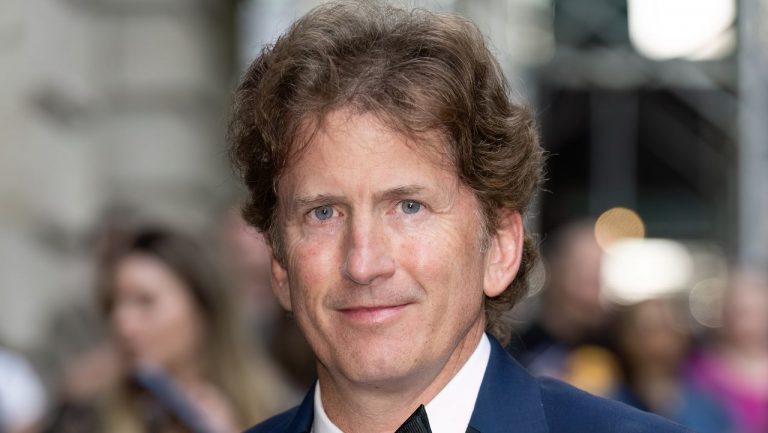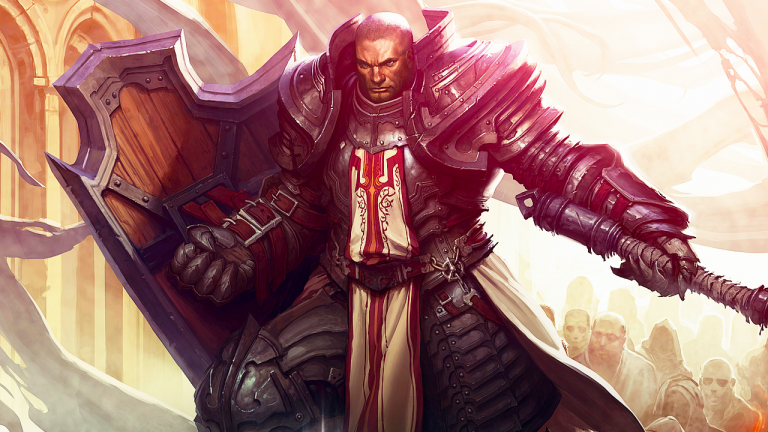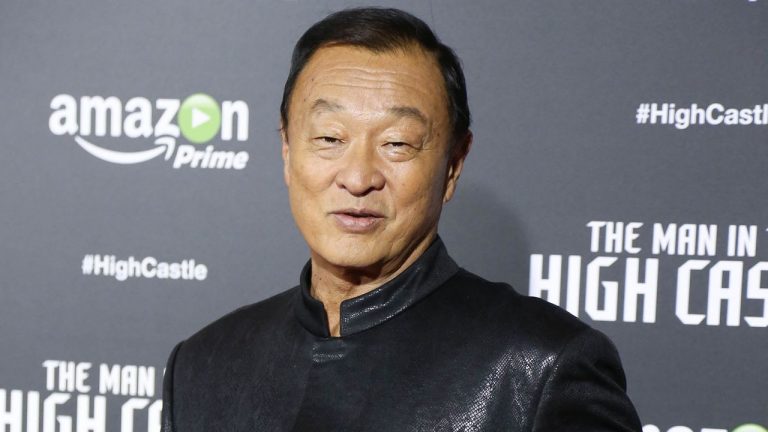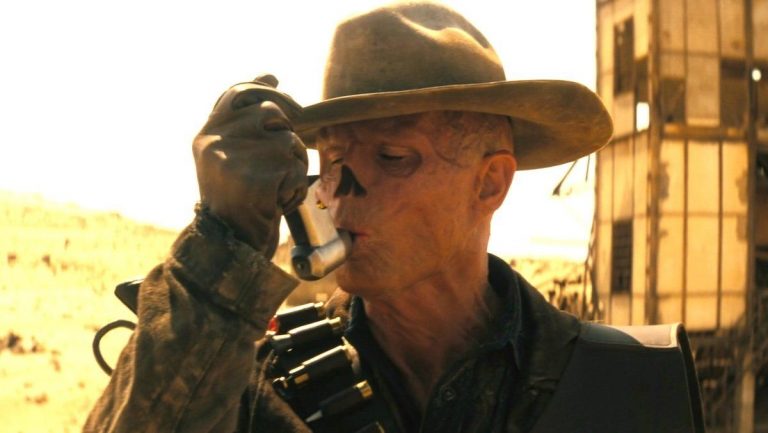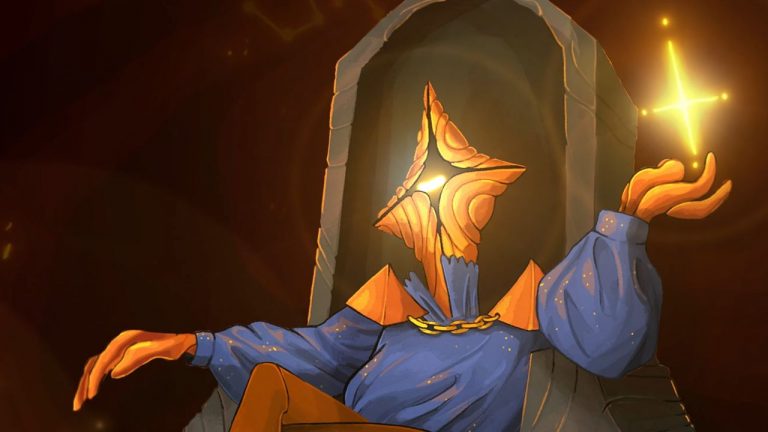In the vast landscape of fantasy literature, few series have captured the imagination of readers quite like the Dragonlance saga. Within this rich tapestry of tales, the Legends Trilogy stands out as a pinnacle of storytelling, character development, and thematic depth. Comprising the novels “Time of the Twins,” “War of the Twins,” and “Test of the Twins,” this trilogy takes readers on a journey that transcends the typical boundaries of fantasy fiction, delving into complex moral dilemmas, the nature of power, and the bonds of family. These truly are some of the best Dragonlance novels you can read.
The Legends Trilogy holds a unique place in the Dragonlance series, shifting focus from the epic battles and world-shaping events of the Chronicles to a more personal, introspective narrative. At its heart is the tumultuous relationship between the twins Raistlin and Caramon Majere, whose intertwined destinies form the core of a story that spans centuries and challenges the very fabric of time and space in the world of Krynn.
The impact of the Legends Trilogy on the fantasy genre and Dungeons & Dragons lore cannot be overstated. It pushed the boundaries of what was possible in fantasy storytelling, introducing complex anti-heroes, grappling with themes of ambition and redemption, and exploring the consequences of wielding immense magical power. The trilogy’s influence can be seen in countless works that followed, from novels to role-playing game modules, cementing its place as a cornerstone of modern fantasy.
As we embark on this exploration of the Dragonlance Legends Trilogy, we’ll delve into the key themes, analyze these unforgettable Dragonlance characters, and examine the lasting legacy of this remarkable series. Whether you’re a longtime fan of Dragonlance or new to the world of Krynn, the depth and complexity of the Legends Trilogy offer insights and revelations that continue to resonate with readers decades after its initial publication.
The Legacy of the Dragonlance Legends Trilogy
The Dragonlance Legends Trilogy stands as a testament to the power of fantasy literature to explore profound themes and complex characters within a richly imagined world. Its legacy extends far beyond the boundaries of its own pages, influencing not only the broader Dragonlance series but also shaping the landscape of fantasy fiction and role-playing games for generations.
A Continuation of the Dragonlance Saga
The Legends Trilogy builds upon the foundation laid by the Chronicles Trilogy, taking readers deeper into the world of Krynn and the lives of its most enigmatic characters. While the Chronicles focused on the epic struggle against the forces of evil during the War of the Lance, the Legends Trilogy shifts gears, zooming in on the personal struggles and moral dilemmas faced by its protagonists.
This change in focus represents a bold narrative choice, moving from the sweeping battles and clear-cut heroism of the Chronicles to a more nuanced exploration of power, ambition, and the blurred lines between good and evil. The Legends Trilogy asks difficult questions: What is the true nature of heroism? Can the pursuit of power ever be justified? How do our choices shape not only our own destinies but the fate of entire worlds?
By centering the narrative on Raistlin Majere’s quest for godhood and the efforts to stop him, the trilogy creates a more intimate yet no less epic story. The fate of Krynn hangs in the balance, but the battle is fought not on sprawling battlefields but in the hearts and minds of a select few individuals. This shift allows for a deeper examination of character motivations and the consequences of their actions.
The significance of the Legends Trilogy in expanding the world of Krynn cannot be overstated. Through its time-traveling narrative, readers are given glimpses of Krynn’s past, including the cataclysmic events that shaped the world readers came to know in the Chronicles. This expansion of the timeline adds depth and richness to the Dragonlance setting, providing context for the current state of the world and its inhabitants.
Moreover, the trilogy introduces new dimensions to familiar locations and concepts. The Tower of High Sorcery in Palanthas, for instance, becomes more than just a stronghold of magic; it becomes a character in its own right, with a dark history and an ominous presence that looms over the narrative. The nature of magic itself is explored in greater depth, with the introduction of concepts like the Bloodstone of Fistandantilus and the intricacies of time travel magic.
The Legends Trilogy also expands on the cosmology of the Dragonlance universe, delving into the realms of the gods and the nature of divinity itself. Through Raistlin’s ambitious quest, readers gain insight into the workings of divine power in Krynn and the delicate balance between the forces of good, evil, and neutrality. This exploration adds layers of complexity to the religious and philosophical underpinnings of the Dragonlance world.
By focusing on a smaller cast of central characters, the Legends Trilogy allows for unprecedented character development within the Dragonlance series. Characters who played supporting roles in the Chronicles, like Raistlin and Caramon, are given room to grow and evolve in ways that profoundly impact both their personal arcs and the fate of Krynn itself. This deep dive into character psychology set a new standard for character development in fantasy literature.
The Authors Behind the Magic
The Dragonlance Legends Trilogy is a testament to the collaborative genius of Margaret Weis and Tracy Hickman, two authors whose partnership has become legendary in the realm of fantasy literature. Their unique blend of storytelling prowess, world-building expertise, and ability to create complex, relatable characters reached new heights in this trilogy, cementing their status as masters of the genre.
Margaret Weis brings her keen insight into character psychology and her talent for crafting intricate plots to the forefront in the Legends Trilogy. Her ability to delve into the depths of characters’ motivations and inner conflicts shines particularly bright in the portrayal of Raistlin Majere, whose complex and often contradictory nature is explored with nuance and depth. Weis’s background in editing and her deep understanding of narrative structure ensure that each book in the trilogy is not only compelling in its own right but also fits seamlessly into the larger arc of the story.
Tracy Hickman’s contributions are equally vital to the trilogy’s success. His expertise in world-building and his background in game design bring a sense of logic and consistency to the magical systems and historical events depicted in the books. Hickman’s ability to create vivid, immersive settings is on full display as the trilogy takes readers through different eras of Krynn’s history, from the opulent halls of Istar to the war-torn landscapes of the Dwarfgate Wars.
Together, Weis and Hickman’s storytelling evolved significantly in the Legends Trilogy. While their work in the Chronicles Trilogy was groundbreaking in its own right, the Legends Trilogy showcases a maturation of their craft. The narrative becomes more complex, the themes more nuanced, and the character development more profound. They demonstrate a willingness to take risks, pushing the boundaries of what was expected in fantasy literature at the time.
One of the key areas where this evolution is evident is in the trilogy’s handling of morally ambiguous characters and situations. Weis and Hickman move away from the more clear-cut good versus evil dichotomy of traditional fantasy, presenting readers with characters whose motivations and actions exist in shades of gray. This approach adds a level of realism and complexity to the story that resonates with readers on a deeper level.
The authors’ skill in balancing multiple timelines and interweaving complex plot threads is also on full display in the Legends Trilogy. The narrative jumps between different periods in Krynn’s history, yet never loses coherence or momentum. This intricate plotting, combined with the authors’ keen sense of pacing, keeps readers engaged throughout the trilogy’s twists and turns.
The lasting influence of Weis and Hickman’s work on the fantasy genre cannot be overstated. The Legends Trilogy, in particular, has inspired countless authors to explore more complex themes and characters in their own works. The concept of the morally ambiguous protagonist, epitomized by Raistlin Majere, has become a staple of modern fantasy literature. Similarly, the trilogy’s exploration of time travel and its consequences has influenced how other authors approach this tricky narrative device.
Moreover, Weis and Hickman’s approach to world-building, which seamlessly blends detailed lore with character-driven storytelling, has set a standard for fantasy authors. Their ability to create a world that feels lived-in and historically rich, while still maintaining focus on the personal journeys of their characters, continues to be emulated in fantasy literature today.
The collaborative model exemplified by Weis and Hickman has also had a lasting impact on the industry. Their partnership demonstrated the power of combining diverse talents and perspectives in creating rich, multi-layered narratives. This model of collaboration has inspired many other author partnerships in the fantasy genre and beyond.
Key Themes in the Dragonlance Legends Trilogy
The Dragonlance Legends Trilogy is renowned not just for its captivating plot and memorable characters, but also for its exploration of profound themes that resonate with readers long after they’ve turned the final page. These themes add layers of complexity to the narrative, elevating it beyond typical fantasy fare and inviting readers to grapple with weighty philosophical and moral questions.
Power and Corruption
At the heart of the Legends Trilogy lies a deep exploration of power and its corrupting influence. This theme is primarily embodied in the character of Raistlin Majere, whose relentless pursuit of arcane might drives much of the trilogy’s plot. Through Raistlin’s journey, the authors delve into the allure of power and the moral compromises one might make in its pursuit.
Raistlin’s quest for godhood serves as a cautionary tale about the dangers of unchecked ambition. As he grows in magical prowess, we see the toll it takes on his humanity. His relationships deteriorate, his empathy wanes, and his moral compass becomes increasingly skewed. This progression raises poignant questions about the true cost of power and whether any amount of might is worth the sacrifice of one’s soul.
The trilogy doesn’t present this theme in simple black and white terms, however. Raistlin’s motivations are complex, stemming from a lifetime of physical weakness and social isolation. His desire for power is, in many ways, a desire for control over a life that has often felt beyond his grasp. This nuanced portrayal invites readers to consider the root causes of the hunger for power and the societal factors that might drive someone to seek it at any cost.
Moreover, the corrupting influence of power is not limited to Raistlin alone. Other characters, such as Fistandantilus and the Kingpriest of Istar, serve as historical examples of how even those with ostensibly good intentions can be led astray by the promise of greater power. This recurring motif throughout Krynn’s history suggests a cyclical nature to the corruption of power, adding depth to the world-building and providing a sobering reflection on human nature.
The consequences of seeking power at all costs are vividly portrayed throughout the trilogy. From the Cataclysm brought about by the Kingpriest’s hubris to the potential unraveling of time itself due to Raistlin’s ambitions, the books make clear that the repercussions of such pursuits extend far beyond the individual. This serves as a powerful commentary on the interconnectedness of all things and the responsibility that comes with wielding great power.
Ultimately, the trilogy’s exploration of power and corruption challenges readers to examine their own relationships with power and ambition. It poses difficult questions: At what point does the pursuit of power become destructive? Can power ever truly satisfy, or does it only breed a hunger for more? These questions linger long after the story concludes, making the theme of power and corruption one of the most impactful and thought-provoking aspects of the Legends Trilogy.
Destiny and Free Will
The tension between destiny and free will forms another central theme of the Dragonlance Legends Trilogy, adding a layer of philosophical depth to the narrative. Throughout the books, characters grapple with the question of whether their actions are predetermined or if they have the power to shape their own fates. This theme is intricately woven into the plot, particularly through the use of time travel and prophecy.
Raistlin’s journey is perhaps the most prominent exploration of this theme. His apparent destiny as seen in visions and prophecies seems to point towards an inevitable confrontation with the Dark Queen Takhisis. Yet, the trilogy constantly questions whether this future is set in stone or if Raistlin’s choices can alter the course of events. This uncertainty creates a palpable tension throughout the narrative, keeping readers engaged and pondering the nature of fate.
The concept of prophecy plays a significant role in the trilogy, but it’s presented in a nuanced manner. Rather than being infallible predictions, prophecies in the Legends Trilogy are often cryptic and open to interpretation. This approach allows for the coexistence of predestination and free will, suggesting that while certain events may be foreseen, the exact path to those events and their ultimate outcomes remain influenced by individual choices.
Caramon’s character arc also significantly contributes to this theme. His journey through time and his efforts to prevent his brother’s rise to power challenge the idea of a fixed timeline. The alterations to history that result from his actions demonstrate the potential for individuals to change what might seem to be predetermined events. This adds a layer of hope and agency to the narrative, suggesting that despite the weight of destiny, individual choices still matter.
The trilogy’s treatment of time travel further complicates the relationship between destiny and free will. The paradoxes and altered timelines that result from characters moving through different eras raise questions about the malleability of fate. If the past can be changed, what does that mean for the concept of destiny? The books don’t provide easy answers, instead inviting readers to contemplate these complex ideas.
This theme extends beyond individual characters to encompass the fate of entire civilizations. The fall of Istar, for instance, is presented as a pivotal moment in Krynn’s history. While it seems to be a predetermined event, the actions of characters in the past still have the power to influence how this cataclysm unfolds. This interplay between large-scale historical events and individual actions adds depth to the world-building and reinforces the complexity of the destiny versus free will theme.
Ultimately, the Legends Trilogy suggests that while larger forces may be at play in shaping the course of events, individual choices and actions still have profound importance. This balanced approach to the theme of destiny and free will encourages readers to consider their own agency in shaping their lives and the world around them, making it a particularly resonant and thought-provoking aspect of the series.
Sacrifice and Redemption
The themes of sacrifice and redemption run deep through the Dragonlance Legends Trilogy, adding emotional weight and moral complexity to the narrative. These interconnected concepts are explored through various character arcs, but are perhaps most poignantly embodied in the journey of Caramon Majere.
Caramon’s arc throughout the trilogy is a powerful study in sacrifice. Initially defined by his role as Raistlin’s protector and caretaker, Caramon must learn to forge his own identity and purpose. This journey requires him to sacrifice not only his preconceived notions of his relationship with his twin but also his own desires and, potentially, his very existence. The physical and emotional toll of his time-traveling mission to save both his brother and the world of Krynn exemplifies the idea that true heroism often comes at great personal cost.
The concept of sacrifice is not limited to Caramon, however. Throughout the trilogy, characters are faced with difficult choices that require them to give up something of great value for a greater good. Crysania’s willingness to risk her life and faith in an attempt to redeem Raistlin, and Tasslehoff’s readiness to alter his own timeline to save his friends, are other notable examples. These sacrifices serve to heighten the stakes of the narrative and underscore the idea that in a world where forces of great evil exist, preserving good often requires significant personal loss.
Redemption emerges as a powerful counterpoint to the darker themes of power and corruption. The trilogy posits that even in a world of moral ambiguity, there is always the possibility for redemption. This is perhaps most notably explored through Raistlin’s character. Despite his descent into darkness, the books leave open the possibility of his redemption until the very end, maintaining tension and allowing readers to hope for his salvation.
Caramon’s journey also encompasses the theme of redemption. His growth from a codependent, often directionless warrior to a man capable of making world-altering decisions represents a form of personal redemption. By confronting his own weaknesses and making difficult choices, Caramon redeems himself from his former limitations and emerges as a true hero.
The interplay between sacrifice and redemption creates some of the most emotionally resonant moments in the trilogy. Characters often find that the path to redemption requires great sacrifice, whether of their pride, their preconceptions, or even their lives. This connection adds depth to both themes, suggesting that true redemption is not easily won but requires genuine commitment and often painful change.
These themes also contribute significantly to the philosophical depth of the trilogy. They raise questions about the nature of heroism, the possibility of overcoming one’s past or nature, and the value of self-sacrifice for a greater good. By presenting redemption as a difficult but achievable goal, the books offer a message of hope even in the face of great darkness.
Moreover, the exploration of sacrifice and redemption adds layers to the world-building of Krynn. The history of the world is shaped by acts of great sacrifice, from the gods relinquishing direct control over the world to the heroes of various ages giving their lives to combat evil. This recurring motif suggests a world where great achievements and the maintenance of good require ongoing sacrifice, adding a bittersweet quality to the setting that sets it apart from more straightforward fantasy worlds.
The emotional and philosophical depth added by these themes elevates the Legends Trilogy beyond simple adventure stories. By grappling with concepts of sacrifice and redemption, the books invite readers to consider their own moral choices and the possibility of personal growth and change. This contribution to the series’ thematic richness is a key factor in its enduring appeal and its status as a classic of fantasy literature.
Analyzing the Key Characters
The Dragonlance Legends Trilogy is renowned for its complex and deeply developed characters. These individuals not only drive the plot forward but also serve as vehicles for exploring the trilogy’s central themes. Let’s delve into the key characters that make this series so compelling.
Raistlin Majere: The Anti-Hero
Raistlin Majere stands as one of the most complex and fascinating characters not just in the Dragonlance series, but in fantasy literature as a whole. His journey from a sickly, ambitious young mage to a power-hungry archmage capable of challenging the gods themselves forms the backbone of the Legends Trilogy.
At his core, Raistlin is driven by a relentless ambition born from a lifetime of physical weakness and social isolation. His pursuit of magical power is not merely a quest for strength, but a means of asserting control over a world that has often left him feeling powerless. This motivation adds layers of complexity to his character, making him more than just a typical villain.
Raistlin’s moral ambiguity is perhaps his most defining characteristic. Throughout the trilogy, he commits acts of both great cruelty and unexpected kindness. He manipulates those around him, including his own brother, yet at times shows flashes of genuine care and concern. This constant tension between his darker impulses and his remaining humanity makes him an endlessly fascinating character to follow.
The relationship between Raistlin and his twin brother Caramon is central to his character development. Their codependent dynamic, with Caramon as the protector and Raistlin as the protected, shapes much of Raistlin’s worldview and drives many of his actions. His desire to break free from this dynamic and prove his own strength is a key factor in his pursuit of power.
Raistlin’s quest for godhood drives the plot of the Legends Trilogy. His willingness to manipulate time itself and risk the very fabric of reality in his bid for power showcases the extent of his ambition. Yet, even as he pursues this goal, the trilogy leaves open the question of whether Raistlin truly desires the outcome he claims to seek, adding another layer of complexity to his character.
What makes Raistlin such an iconic character in fantasy literature is the way he challenges traditional notions of heroism and villainy. He is neither a straightforward hero nor a purely evil villain. Instead, he occupies a morally gray area that forces readers to grapple with difficult questions about power, ambition, and the nature of good and evil.
Raistlin’s legacy extends far beyond the Dragonlance series. His character has influenced countless other morally ambiguous protagonists in fantasy literature, paving the way for more complex and nuanced character portrayals in the genre. The depth of his character development, the complexity of his motivations, and the impact he has on the world around him continue to captivate readers and inspire writers decades after his creation.
Caramon Majere: The Loyal Brother
Caramon Majere serves as a perfect foil to his twin brother Raistlin, embodying many of the qualities that Raistlin lacks while struggling with his own set of flaws and challenges. His journey throughout the Legends Trilogy is one of personal growth, self-discovery, and the redefinition of brotherly love.
At the start of the trilogy, Caramon is defined largely by his relationship with Raistlin. Strong where Raistlin is weak, straightforward where Raistlin is cunning, Caramon has built his entire identity around being his brother’s protector. This codependency forms the basis of his character arc throughout the series.
Caramon’s journey from warrior to a man seeking purpose is one of the most compelling aspects of the trilogy. Forced to confront a future where his brother has become a god, Caramon must grapple with the consequences of Raistlin’s ambitions and his own role in enabling them. This leads him on a path of self-discovery, forcing him to find value and purpose beyond his relationship with his twin.
The trials Caramon faces throughout the trilogy serve to highlight his inner strength and resilience. From battling alcoholism to navigating the complexities of time travel, Caramon’s challenges are often as much internal as they are external. His struggle to overcome his dependencies – both on alcohol and on his role as Raistlin’s protector – forms a crucial part of his character development.
One of Caramon’s most important functions in the narrative is to ground the epic, world-shaking events in a relatable, human perspective. While Raistlin deals with gods and world-altering magic, Caramon’s struggles are often more down-to-earth. His experiences provide an emotional anchor for readers, making the high-stakes plot feel more personal and immediate.
The evolution of Caramon’s relationship with Raistlin is central to his character arc. Throughout the trilogy, Caramon must learn to see Raistlin not as someone to be protected, but as an individual capable of making his own choices – for good or ill. This shift in perspective is crucial to Caramon’s growth and to the resolution of the brothers’ complex dynamic.
Caramon’s loyalty, while one of his greatest strengths, is also explored as a potential weakness. His unwavering devotion to Raistlin often blinds him to his brother’s faults and the consequences of his actions. The trilogy uses Caramon’s character to explore the fine line between loyalty and enabling, asking difficult questions about the nature of true brotherly love.
By the end of the trilogy, Caramon emerges as a fully realized individual, capable of making difficult decisions and standing on his own. His growth from a codependent warrior to a man willing to sacrifice everything to save both his brother and the world showcases the trilogy’s themes of personal growth and redemption.
Caramon’s journey resonates with many readers because it speaks to universal experiences of family loyalty, self-discovery, and the challenge of forging one’s own path. His character development throughout the Legends Trilogy stands as a testament to the series’ nuanced exploration of human relationships and personal growth.
Crysania of Tarinius: The Devout Cleric
Crysania of Tarinius, a high-ranking cleric of Paladine, plays a crucial role in the Legends Trilogy, serving as both a catalyst for events and a complex character in her own right. Her journey explores themes of faith, temptation, and the often blurry line between devotion and obsession.
At the beginning of the trilogy, Crysania is presented as a paragon of virtue and faith. Her unwavering belief in the power of good and her dedication to her god Paladine define her character. However, as the story progresses, this very strength becomes a point of vulnerability, leading her into a complex and dangerous relationship with Raistlin Majere.
Crysania’s struggle between her faith and her growing feelings for Raistlin forms one of the central conflicts of her character arc. Her belief that she can redeem Raistlin, turning him from his dark path back to the light, drives many of her actions throughout the trilogy. This conviction, born from a mixture of religious fervor and personal attraction, leads her to make choices that have far-reaching consequences for both herself and the world of Krynn.
The complexity of Crysania’s character lies in her motivations. While she genuinely believes she is acting in service of her god and the greater good, there are undertones of pride and ambition in her actions. Her determination to be the one to save Raistlin can be seen as both admirable and hubristic, reflecting the trilogy’s nuanced approach to questions of morality and faith.
As a character caught between light and darkness, Crysania serves as a bridge between the moral extremes represented by other characters. Her interactions with both Raistlin and Caramon highlight different aspects of her personality and beliefs, showcasing the internal conflict between her spiritual ideals and her human desires.
Crysania’s journey through time alongside Raistlin and Caramon allows for a unique exploration of faith in the face of historical events. Witnessing the corruption of Istar and the events leading to the Cataclysm challenges her beliefs and forces her to confront the complexities of faith and divine intervention. This experience adds depth to her character, moving her from a somewhat naive true believer to a more nuanced individual with a deeper understanding of the complexities of good and evil.
The gradual erosion of Crysania’s sight throughout the trilogy serves as a powerful metaphor for her spiritual journey. As she loses her physical vision, she gains deeper spiritual insights, though not always in the way she expects. This physical transformation mirrors her internal journey, highlighting the costs and rewards of her unwavering faith.
Crysania’s decisions and actions have a significant impact on the trilogy’s outcome. Her presence influences Raistlin’s plans and provides a moral counterpoint to his ambitions. The tension between her desire to save Raistlin and her duty to her faith creates some of the most compelling moral dilemmas in the series.
By the end of the trilogy, Crysania emerges as a changed woman. Her experiences have tested and refined her faith, leaving her with a more profound, if more complex, understanding of good, evil, and the shades of gray in between. Her character arc serves as a powerful exploration of the nature of faith, the dangers of blind devotion, and the possibility of finding strength through adversity.
Crysania’s role in the Legends Trilogy adds significant depth to the narrative, providing a unique perspective on its themes of power, faith, and redemption. Her journey from a sheltered cleric to a woman who has faced the darkest aspects of both the world and herself resonates with readers, offering insights into the complexities of faith and the human heart.
The Impact of the Legends Trilogy on the Dragonlance Universe
The Dragonlance Legends Trilogy left an indelible mark on the world of Krynn and the broader Dragonlance universe. Its influence extends far beyond its own pages, shaping future novels, game modules, and the way readers and players engage with the world of Dragonlance.
Expanding the World of Krynn
The Legends Trilogy significantly expanded the lore and history of Krynn, adding depth and complexity to an already rich fantasy world. Through its time-traveling narrative, the trilogy provided readers with firsthand glimpses into pivotal moments in Krynn’s history, bringing to life events that had previously only been mentioned in legends and backstories.
One of the most significant contributions of the trilogy was its exploration of the Time of Legends, particularly the era leading up to the Cataclysm. By taking readers to the city of Istar at the height of its power, the books provided context for one of the most important events in Krynn’s history. This not only enriched the world-building but also added layers of meaning to the current state of Krynn as depicted in other Dragonlance novels.
The trilogy also introduced new locations and expanded on existing ones, each with its own rich history and significance. The Tower of High Sorcery in Palanthas, for instance, became more than just a setting; it emerged as a character in its own right, with a dark and complex history that mirrors the journey of Raistlin Majere. Similarly, the portrayal of the Abyss and the realms of the gods added new dimensions to the cosmology of the Dragonlance universe.
In terms of magical elements, the Legends Trilogy deepened the understanding of how magic works in the world of Krynn. The exploration of time travel magic, the nature of the Bloodstone of Fistandantilus, and the intricacies of divine magic all contributed to a more nuanced and complex magical system. This expanded magical lore has had lasting effects on how magic is portrayed and understood in subsequent Dragonlance works.
The trilogy also significantly developed the mythology of Dragonlance. By delving into the relationships between gods and mortals, and exploring the consequences of divine intervention (or lack thereof), the books added depth to the religious and philosophical underpinnings of the world. The portrayal of the gods, particularly Takhisis and Paladine, became more nuanced, moving beyond simple representations of good and evil to more complex entities with their own agendas and limitations.
Moreover, the Legends Trilogy’s exploration of the cyclical nature of history in Krynn – with events and personalities echoing across different eras – became a defining characteristic of the Dragonlance world. This concept has influenced how later stories in the setting approach themes of destiny, free will, and the impact of individual actions on the grand scale of history.
The character developments in the Legends Trilogy have had lasting impacts on the Dragonlance universe. Raistlin Majere, in particular, was elevated to an almost mythic status within the lore of Krynn. His actions and legacy continue to reverberate through later stories, influencing events and characters long after the trilogy’s conclusion. Similarly, the growth and experiences of characters like Caramon and Crysania have shaped how these individuals are portrayed in other Dragonlance works set after the Legends Trilogy.
The trilogy’s exploration of moral ambiguity and the complexities of good and evil has had a profound impact on the tone of subsequent Dragonlance stories. It set a precedent for more nuanced storytelling within the setting, encouraging future authors to explore similar themes and create morally complex characters.
Lastly, the Legends Trilogy’s approach to integrating personal narratives with world-shaking events became a template for many future Dragonlance stories. The idea that the fate of the world could hinge on the personal choices and growth of a few key individuals became a recurring motif in the setting, influencing how epic stories are told within the Dragonlance universe.
Influence on DND and Beyond
The impact of the Dragonlance Legends Trilogy extends far beyond the confines of its own setting, leaving a lasting mark on the world of Dungeons & Dragons and the broader landscape of fantasy literature and gaming.
In the realm of D&D, the trilogy had a significant influence on campaign design and storytelling approaches. The books demonstrated how to weave complex, character-driven narratives into the framework of a D&D world, inspiring Dungeon Masters to create more nuanced and morally ambiguous scenarios for their players. The trilogy’s handling of time travel and alternate timelines also provided a template for DMs looking to incorporate these complex elements into their campaigns.
The character of Raistlin Majere, in particular, has had a profound impact on how magic-users are perceived and played in D&D. His complex motivations, moral ambiguity, and the price he pays for his power have inspired countless players in their creation of morally complex spellcaster characters. The trilogy’s exploration of the corrupting influence of magic has become a common theme in many D&D campaigns, adding depth to the portrayal of arcane power in the game.
The Legends Trilogy also influenced the development of official D&D modules and campaign settings. Its success demonstrated the appeal of morally complex narratives and time-bending plots, elements that have since appeared in various official D&D adventures. The trilogy’s approach to integrating character development with world-shaking events has become a model for many high-level D&D campaigns.
Beyond D&D, the Legends Trilogy has left its mark on the broader fantasy genre. Its approach to crafting morally ambiguous protagonists, particularly in the character of Raistlin, has influenced numerous fantasy authors. The trilogy showed that readers were ready for more complex, ethically challenging narratives, paving the way for the grimdark fantasy subgenre and other works that blur the lines between hero and villain.
The trilogy’s handling of time travel has also been influential in fantasy literature and gaming. Its exploration of the paradoxes and consequences of altering the past set a high standard for time travel narratives, inspiring other authors and game designers in their approach to this complex plot device.
In the world of video games, echoes of the Legends Trilogy can be seen in numerous RPGs that feature morally ambiguous protagonists, complex brotherly relationships, or narratives dealing with the corrupting nature of power. Games like “Dragon Age,” “Fable,” and others show influences that can be traced back to the themes and character dynamics explored in the Legends Trilogy.
The trilogy’s impact on fantasy art should also not be overlooked. The vivid descriptions of characters, locations, and magical effects in the books have inspired countless artists, influencing how magic and fantasy elements are visually represented across various media.
Furthermore, the Legends Trilogy’s success helped solidify the viability of long-form, multi-book fantasy narratives tied to gaming properties. This paved the way for other game-based novel series and demonstrated the potential for cross-media storytelling in the fantasy genre.
The trilogy’s exploration of faith, redemption, and the nature of good and evil has also influenced how these themes are approached in fantasy literature and games. Its nuanced handling of religious and philosophical questions set a new standard for depth in fantasy storytelling.
Lastly, the Legends Trilogy’s enduring popularity has ensured its place as a touchstone of fantasy literature. It continues to be read and discussed decades after its initial publication, introducing new generations of readers to its complex characters and thought-provoking themes. Its influence can be seen in reading lists, course syllabi, and countless online discussions, cementing its status as a classic of the genre.
Dragonlance Legends is Legendary Literature
The Dragonlance Legends Trilogy stands as a monumental achievement in fantasy literature, one that has left an indelible mark on the genre and continues to captivate readers decades after its initial publication. Through its complex characters, intricate plot, and exploration of profound themes, the trilogy elevates the Dragonlance series from enjoyable fantasy adventure to a work of substantial literary merit.
At the heart of the trilogy’s enduring appeal is its willingness to grapple with complex moral and philosophical questions. The journey of Raistlin Majere, in particular, challenges readers to consider the nature of ambition, the corrupting influence of power, and the fine line between greatness and madness. Through Caramon’s struggles and growth, the trilogy explores themes of codependency, self-discovery, and the true meaning of heroism. Crysania’s arc delves into questions of faith, temptation, and the potential dangers of unchecked devotion.
The Legends Trilogy’s impact on the Dragonlance universe cannot be overstated. It expanded the world of Krynn in significant ways, adding depth to its history, enriching its magical and religious systems, and setting a new standard for character development within the setting. The ripples of the events depicted in the trilogy continue to be felt in subsequent Dragonlance works, testament to the enduring power of its narrative.
Moreover, the influence of the Legends Trilogy extends far beyond the boundaries of Dragonlance. It has shaped how morally ambiguous characters are written in fantasy literature, influenced the design of Dungeons & Dragons campaigns and modules, and inspired countless readers and writers in their own creative endeavors. Its sophisticated handling of complex themes and its deft balancing of personal narratives with world-shaking events have set a high bar for fantasy storytelling.
For readers new to Dragonlance, the Legends Trilogy offers a perfect entry point into a rich and complex fantasy world. While it builds on events established in previous books, it stands on its own as a compelling and thought-provoking narrative. For longtime fans of the series, the trilogy provides a deeper and more nuanced exploration of beloved characters and pivotal events in the world of Krynn.
Ultimately, the Dragonlance Legends Trilogy remains a cornerstone of epic fantasy not just for its exciting plot or vivid world-building, but for its profound exploration of the human condition. It reminds us that even in a world of dragons and magic, the most compelling stories are those that speak to our own struggles, desires, and potential for both greatness and fallibility.
As we conclude our exploration of this remarkable trilogy, we encourage both new and returning readers to dive into its pages. The world of Krynn, with all its complexity and wonder, awaits. Whether you’re drawn by the allure of its magic, the depth of its characters, or the weight of its themes, the Dragonlance Legends Trilogy offers a reading experience that is as rewarding as it is unforgettable. In the end, like the cyclical nature of time so central to its plot, the trilogy invites us to return to it again and again, each reading revealing new depths and insights in its timeless tale of ambition, redemption, and the power of choice.
The post Exploring the Depths of the Dragonlance Legends Trilogy appeared first on LitRPG Reads.

